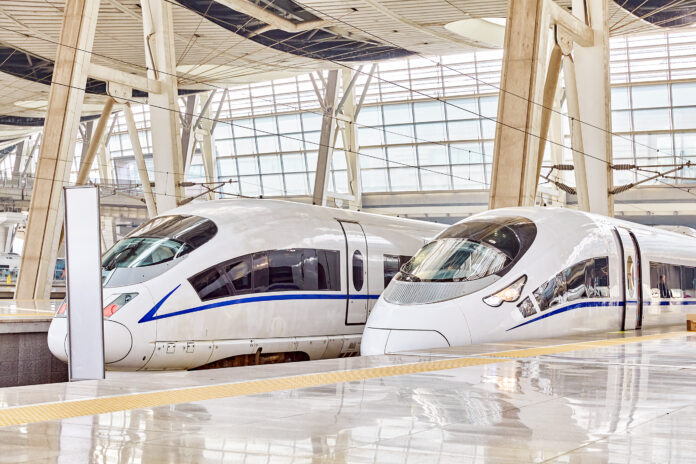Nir Evan Haim, writing for Massivit 3D, says despite the success of rail on a whole, the industry still faces critical challenges. Rail systems operate in a manner that is dependent on combinations of numerous parts and materials, making them vulnerable to downtime when parts break.
The rail industry is moving towards additive manufacturing, also known as 3D printing, to substitute damaged parts or even create new custom pieces – all at revolutionary speeds that will keep trains on the track instead of in repair.
Efficient reparability
Locomotives have many systems made up of thousands of parts working together to allow these mega-ton machines to travel across countries without malfunction. But it only takes one essential part to malfunction to stop a rolling stock in its tracks entirely. After such malfunction occurs, if the piece is not available on hand at the railway yard, it can take several days until the train can go back to functioning correctly due to manufacturing and delivery of the new parts.
Identifying, removing and replacing a damaged part as fast as possible is essential to any rail company’s service continuity. Before 3D printing, companies had to store massive warehouses filled with large amounts of stock and thousands of individual parts in case of repairs, all because of the long manufacturing time needed for each part.
Frequent rolling stock accidents require on demand quick repairs
Companies like SNCF, a major player in the French railway industry, have designed cutting-edge software to identify every possible part that could be printed using additive manufacturing. This software, developed in 2021, determined that 10.3% of all parts could be made using additive manufacturing out of more than 30,000 spare parts, while reducing delivery times by over 85%.
Advancements in prototyping
Another prominent manufacturer of parts for the automotive industry, Polgar, creates train components in addition to designing car parts. Using Omni3D’s Factory 2.0 industrial 3D printer, Polgar has 3D printed a prototype seat set to be installed in new trains. As a result, the company says it has significantly reduced the cost of prototyping, saving R6,798,480 (€370,000), or 90% of the price. In addition, Polgar stated that they were able to print the part in just three weeks, whereas traditional methods require 16 weeks. In order to design the relatively large part, the seat was printed in different components before being assembled.
Large scale 3D printers can churn out full-scale rail parts within a few hours. Large panels and parts as well as functional prototypes can be fabricated, adjusted and re-printed in hours instead of days or weeks. In addition, a range of high-performance printing materials have been developed to serve critical flame retardancy and impact-resistance requirements. Meeting these requirements is crucial for manufacturers of rail parts when considering the size, weight and speed at which these trains are travelling.
Different approaches to 3D adaptation in rail
Every significant rail player worldwide is taking a different approach to adapting 3D printing to rail. Some of these OEMs focus on external parts that are less crucial if damaged. For example, Alstom was able to design drain plugs made of TPU to prevent the headlights in the front of the vehicle from breaking. As a result, a dozen parts were printed in 48 hours, reducing costs by 80%.
Downtime and maintenance produces large costs for railway OEM
Other companies have experimented with replacing whole internal systems and dashboards with 3D-printed parts. For example, professor Simon Iwnicki of the Institute of Railways Research (IRR) at the University of Huddersfield focused his Run2Rail project on the mission of developing small components like axle boxes and bearings parts by using additive manufacturing. The researchers on the project wanted to use 3D printing and carbon fibre to design lighter, safer and quieter trains. As we can see, companies are also looking to additive manufacturing to make the rail experience more enjoyable for commuters, all while boosting company profitability.
Technological advancements have colossal ramifications for the locomotive industry, which suffers detrimental drawbacks from downtime and slow production processes. Manufacturing milestones now enable trains and trams to stay on the tracks, circumventing key vulnerabilities for the rail industry at large.
MASSIVIT
https://massivit3d.com/
















